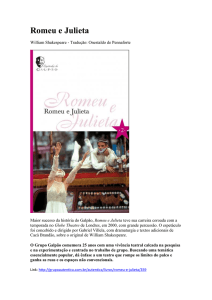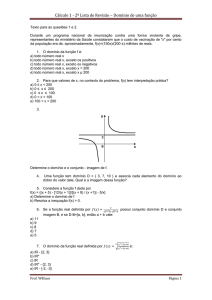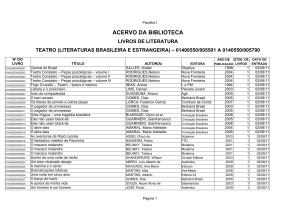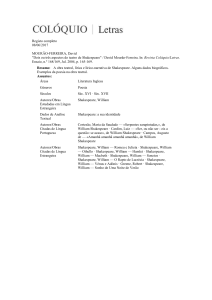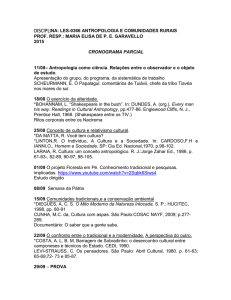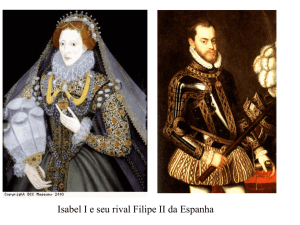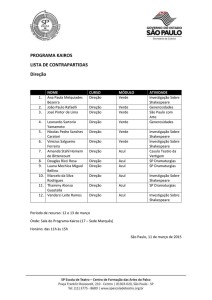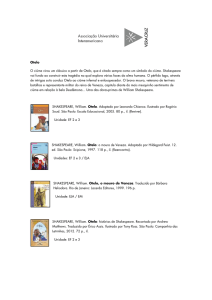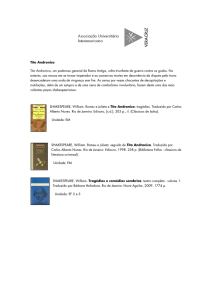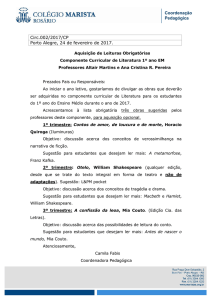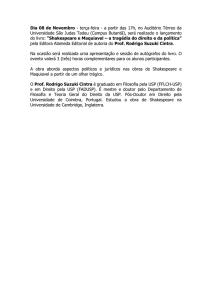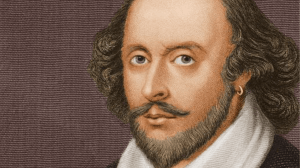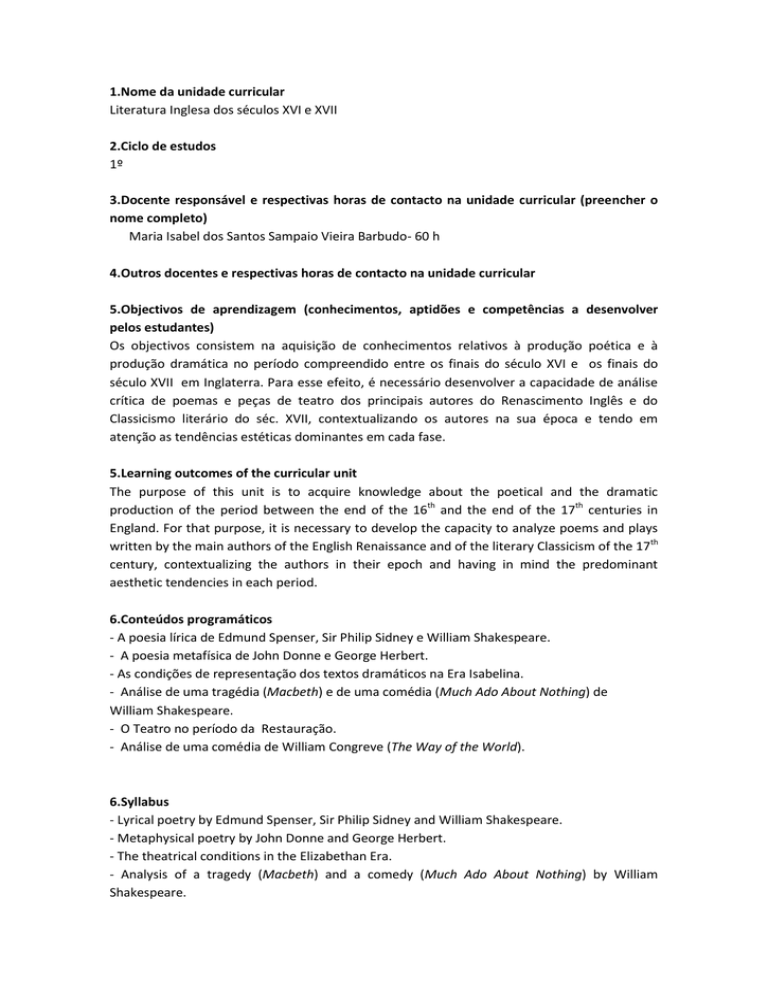
1.Nome da unidade curricular
Literatura Inglesa dos séculos XVI e XVII
2.Ciclo de estudos
1º
3.Docente responsável e respectivas horas de contacto na unidade curricular (preencher o
nome completo)
Maria Isabel dos Santos Sampaio Vieira Barbudo- 60 h
4.Outros docentes e respectivas horas de contacto na unidade curricular
5.Objectivos de aprendizagem (conhecimentos, aptidões e competências a desenvolver
pelos estudantes)
Os objectivos consistem na aquisição de conhecimentos relativos à produção poética e à
produção dramática no período compreendido entre os finais do século XVI e os finais do
século XVII em Inglaterra. Para esse efeito, é necessário desenvolver a capacidade de análise
crítica de poemas e peças de teatro dos principais autores do Renascimento Inglês e do
Classicismo literário do séc. XVII, contextualizando os autores na sua época e tendo em
atenção as tendências estéticas dominantes em cada fase.
5.Learning outcomes of the curricular unit
The purpose of this unit is to acquire knowledge about the poetical and the dramatic
production of the period between the end of the 16th and the end of the 17th centuries in
England. For that purpose, it is necessary to develop the capacity to analyze poems and plays
written by the main authors of the English Renaissance and of the literary Classicism of the 17th
century, contextualizing the authors in their epoch and having in mind the predominant
aesthetic tendencies in each period.
6.Conteúdos programáticos
- A poesia lírica de Edmund Spenser, Sir Philip Sidney e William Shakespeare.
- A poesia metafísica de John Donne e George Herbert.
- As condições de representação dos textos dramáticos na Era Isabelina.
- Análise de uma tragédia (Macbeth) e de uma comédia (Much Ado About Nothing) de
William Shakespeare.
- O Teatro no período da Restauração.
- Análise de uma comédia de William Congreve (The Way of the World).
6.Syllabus
- Lyrical poetry by Edmund Spenser, Sir Philip Sidney and William Shakespeare.
- Metaphysical poetry by John Donne and George Herbert.
- The theatrical conditions in the Elizabethan Era.
- Analysis of a tragedy (Macbeth) and a comedy (Much Ado About Nothing) by William
Shakespeare.
- The Restoration theatre.
- Analysis of a comedy by William Congreve (The Way of the World).
7.Demonstração da coerência dos conteúdos programáticos com os objectivos de
aprendizagem da unidade curricular
A análise de poemas de três autores do Renascimento Inglês que cultivaram a poesia lírica nos
finais do séc. XVI permite compreender a importância do soneto como forma poética
resultante da influência do Renascimento italiano. Na transição para o séc. XVII, as mudanças
histórico-sociais e culturais são por sua vez projectadas na chamada poesia metafísica,
representada nos poemas de autores como John Donne e George Herbert. No que respeita ao
papel do teatro na Era Isabelina, a análise de uma comédia e de uma tragédia de William
Shakespeare permite obter uma noção da importância e complexidade da obra deste
eminente dramaturgo, a que se sucede a abordagem do teatro na segunda metade do séc. VII,
no período da restauração da monarquia inglesa, com o surgimento da comédia de costumes
britânica (comedy of manners), exemplarmente representada em The Way of the World de
William Congreve.
7.Demonstration of the syllabus coherence with the curricular unit's objectives
The analysis of poems by three authors of the English Renaissance who cultivated lyrical poetry
by the end of the 16th century allows for the notion of the importance of the sonnet as a
poetical configuration resulting from the influence of the Italian Renaissance. In the transition
to the 17th century, the historical, social and cultural changes are projected in the so-called
metaphysical poetry, as represented in poems written by John Donne and George Herbert. As
for the importance of the theatre in the Elizabethan Era, the analysis of a comedy and a
tragedy by William Shakespeare may give the notion of the importance and complexity of the
dramatic work of this eminent playwright. This is followed by the approach to the theatre in
the second half of the 17th century, in the Restoration period, with the emergence of the
comedy of manners, paradigmatically illustrated in The Way of the World by William Congreve.
8.Metodologias de ensino (avaliação incluída)
As primeiras sessões são de introdução teórica, versando a definição de conceitos como o
de Humanismo, Renascimento e Classicismo. Depois da contextualização de cada autor,
procede-se à análise dos poemas líricos e metafísicos que fazem parte do programa. Para
esse efeito, é necessário obter noções de prosódia (rima, métrica, configuração estrófica).
No que respeita à análise dos textos dramáticos, é também necessário obter noções
relativas à sua configuração estrutural (enredo, personagens, diálogo), o que possibilita
uma abordagem completa de cada um dos textos. Essa abordagem é feita com a
participação activa dos alunos, incluida na avaliação final de cada um. Para além das
participações orais, a avaliação final inclui dois testes escritos feitos na aula, um a meio do
semestre e o outro no fim. A média dos testes vale 80% e a participação oral 20%.
8.Teaching methodologies (including evaluation)
The first sessions are dedicated to a theoretical introduction, namely the definition of
concepts like Humanism, Renaissance and Classicism. After the contextualization of each
author, there is the analysis of the lyrical and the metaphysical poems of the programme.
For that purpose, it is necessary to obtain notions of prosody (rhyme, meter, stanzas). As
for the analysis of plays, it is also necessary to obtain notions concerning their structural
configuration (plot, characters, dialogue), thus allowing for a complete approach. In this
approach there must be an active participation of the students, which is included in each
final assessment. Besides the oral participations, the final assessment includes two written
tests, one by the middle of the semester and the other at the end. The tests are worth 80%
and the oral participations 20%.
9.Demonstração da coerência das metodologias de ensino com os objectivos de
aprendizagem da unidade curricular
A metodologia adoptada permite que os alunos adquiram os instrumentos terminológicos e
conceptuais necessários para a compreensão dos traços mais relevantes dos períodos
literários incluidos no programa. Começando sempre por uma contextualização históricocultural, na qual se inclui a referência ao panorama eurpopeu em cada uma das épocas,
releva-se a importância da produção poética e dramática no período do Renascimento
inglês (finais do século XVI), realçando também a especificidade deste movimento cultural
e artístico no caso da Inglaterra, na comparação com outros movimentos europeus seus
coetâneos. A análise dos textos dos autores escolhidos como representantes de cada
período permite ter uma noção concreta dos modelos estéticos e das temáticas
adoptadas. No caso da poesia renascentista, a ênfase recai sobre a adopção do soneto e a
configuração que este assume em cada um dos autores estudados. Na transição para a
poesia metafísica da 1ª metade do séc. XVII ressaltam as diferenças resultantes de uma
global alteração de mundividência, plasmada quer no plano temático quer na disparidade
formal. Passando para a produção dramático-teatral, acentua-se também o contraste entre
a Era Isabelina, em que o teatro é o passatempo de todas as camadas sociais, com William
Shakespeare numa posição proeminente, e a sua evolução ao longo do século XVII, no
sentido de uma crescente apropriação pela classe aristocrática. A comédia de costumes da
Restauração surge como exemplo da mudança de paradigma, ao mesmo tempo que é
possível ver nela o resultado da evolução de um conceito de comédia cujo gérmen pode
ser encontrado nalgumas comédias shakespearianas, nomeadamente em Much Ado About
Nothing, que faz parte do programa. A análise dos textos feita nas aulas com a participação
activa dos alunos permite retirar ilações dentro de uma perspectiva diacrónica, que
relaciona os contextos culturais com a evolução da produção literária, nos diversos géneros
representantes do modo lírico e do modo dramático.
9.Demonstration of the coherence between the teaching methodologies and the learning
outcomes
The adopted methodology gives the students the terminological and conceptual
instruments for the understanding of the more relevant features of the literary periods
included in the programme. Always starting with a historical and cultural contextualization,
namely with the reference to the European panorama in each epoch, the importance of the
poetical and theatrical production in the English Renaissance (by the end of the 16 th
century) is underlined, as also the specificity of this cultural and artistic movement in the
English case, in comparison with other contemporary European movements. The analysis of
the texts of the chosen authors allows for a concrete notion of the adopted aesthetic
models and themes. In the case of Renaissance poetry, the emphasis is on the adoption of
the sonnet and its configuration in each of the studied authors. In the transition to the
metaphysical poetry of the first half of the 17th century, there are conspicuous differences
resulting from a global alteration in the world picture, projected both in the thematic
dimension and in the formal disparity. As to the dramatic and theatrical production, there
is also a strong contrast between the Elizabethan Era, in which the theatre was the main
entertainment for all classes, with William Shakespeare in a prominent position, and its
development during the 17th century, in which it is gradually appropriated by the
aristocracy. The Comedy of manners of the Restoration is an illustration of this shift of
paradigm, while at the same time it is possible to consider it as the result of the
development of a concept of comedy whose source may be found in some Shakespearian
comedies, namely in Much Ado About Nothing, a play included in the programme. The
analysis of the texts in class, with the active participation of the students, may lead to
relevant conclusions within a diachronic perspective which relates the cultural contexts
with the development of the literary production, in genres representative of the lyric and
the dramatic modes.
10.Bibliografia
Abrams, M.H. A Glossary of Literary Terms. (1999). N. Y.: Heinly & Heinle.
Bratchell, D.F. Shakespearean Tragedy. (1990). London: Routledge.
Burns, Edward. Restoration Comedy: Crises of Desire and Identity. (1997).NY: St. Martin’s Press.
Congreve, William. The Way of the World. (1971). London/A&C Black.
Evans, G. Blakemore (ed.). (1996). The New Cambridge Shakespeare- The Sonnets. Cambridge
Univ. Press.
Gardner, Helen (ed.). (1957). The Metaphysical Poets. Penguin Books.
Greenblatt, Stephen. (2004). Will in the World. NY, London: W.W. Norton Company.
Hirst, David. Comedy of Manners. (1979). London: Methuen.
Hobsbaum, Philip. (1996). Meter, Rhythm and Verse Form. London, New York: Routledge.
Shakespeare, William. (1990). Macbeth. Oxford University Press.
Shakespeare, William. (1993). Much Ado About Nothing. Oxford Univ. Press.
Wells, Stanley (eds.) (1986). The Cambridge Companion to Shakespeare Studies. Cambridge
Univ. Press.

